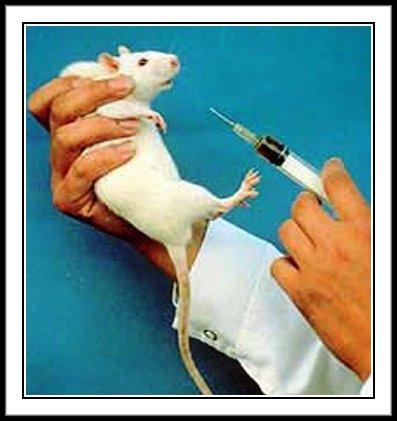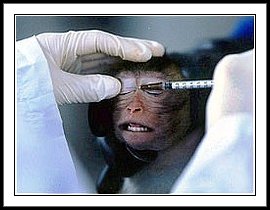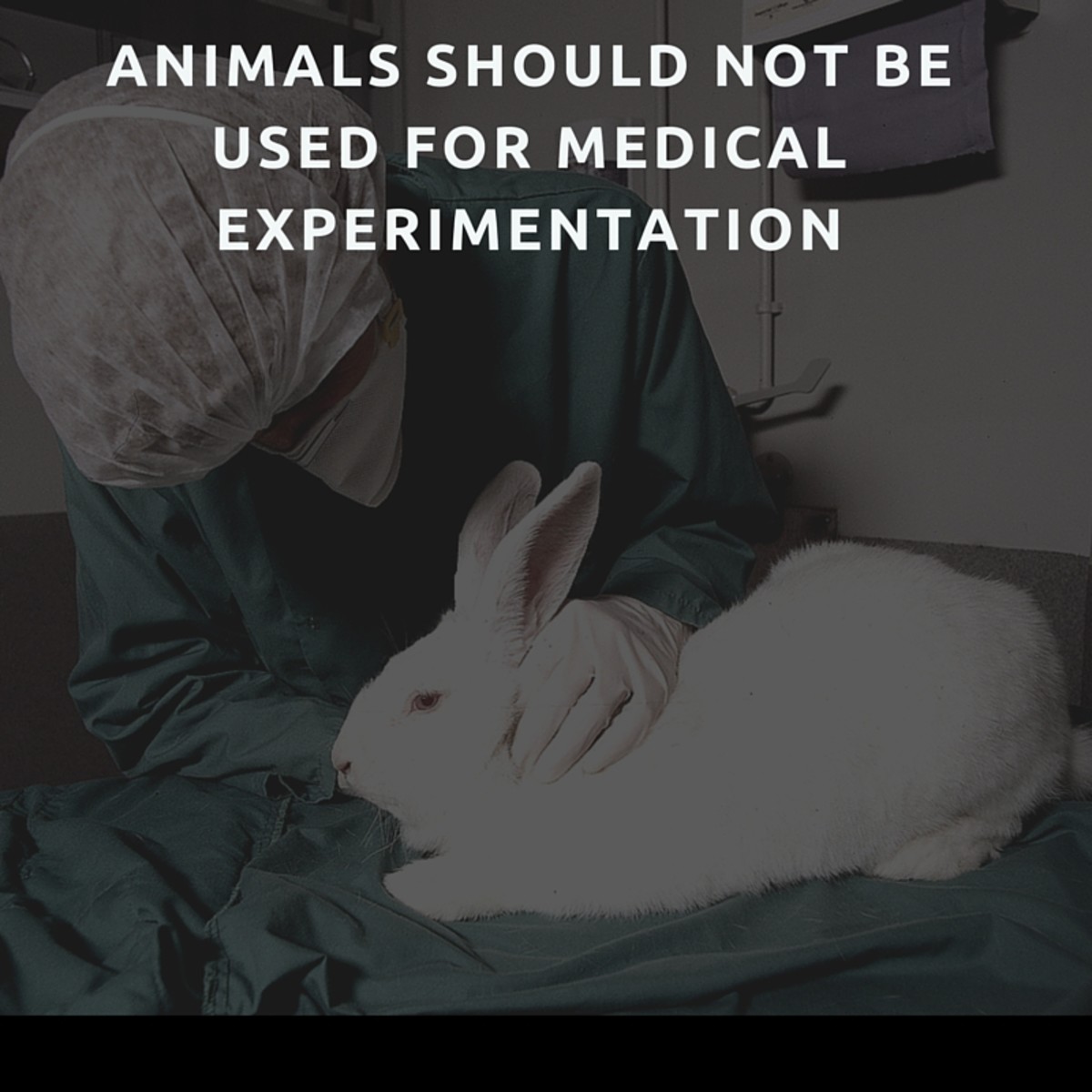Animal Experimentation and Alternatives


Alternatives
In today's world science has made enormous steps in alternatives to animal testing. Other methods now exist instead of using live animals in research. Some organizations sympathetic to the plight of helpless animals consider the scale of animal experimentation unacceptable.
However, it’s not realistic to expect immediate abolition of all animal experiments. Medical research is necessary to discover treatments for dread diseases which threaten human and animal life. Consumer products, medicines and chemicals must be sufficiently studied to discover potential risks to human and animal health, and environmental hazards. Therefore, those for animal rights and those for using animals in experiments instead of humans, frequently clash.
But groups like the Johns Hopkins Center for Alternatives to Animal Testing, has been working with scientists since 1981 to find ways to replace laboratory animals in experiments. The long-term plan is elimination of laboratory animals by developing replacement or alternative methods so suffering of any animals is minimized.
Animals take humans place for testing and research. Research on animals has been necessary for many reasons: to develop vaccines and treatments for diseases and ensure new products are safe to use. It is also useful in helping medical students and veterinarians.


Extensive Testing
Animals are most commonly used in three areas: biomedical research, product safety testing, and education. Biomedical researchers use animals to study the body, processes of disease and health. They are also used to develop new vaccines and treatments for diseases. This research is for the benefit of human health and new veterinary techniques as well.
Industry does extensive testing on animals to measure safety and effectiveness on many consumer products, such as drugs, cosmetics, cleaning products, pesticides and industrial chemicals.
Alternative methods consist of three main categories, Reduction, Refinement and Replacement. Animals are replaced, by methods not involving animals at all or by using only cells or tissues of animals. Many replacement alternatives involve these techniques, where studies are conducted with cells or tissues in culture. If cells are from human beings, it's absolute replacement, if they come from animals, its relative replacement. This method doesn't require a living animal, but often specimens come from animals killed for that reason.



Replacement Not Always an Option
However, replacement isn't always an option. Some testing can't currently be done without animals. In these circumstances, researchers can still reduce the number of animals used. Additionally, scientists can lessen or eliminate pain or suffering to make animals more comfortable.
One example of what used to be considered replacement alternative is commonplace today. Not long ago, if a woman wanted to know if she was pregnant, a laboratory test required killing a rabbit. Now, over-the-counter pregnancy kits are readily available.
Another advance in the United States and Europe recently approved involves the use of a "synthetic skin," called Corrositex, which can be used in place of animals to test chemicals to see whether a substance will corrode or burn the skin.
Computer modeling is another way to replace certain kinds of animal use, particularly in education. Biology classes can practice dissection on a computer model rather than on live frogs. Even medical schools are developing "virtual reality" devices for students to practice on.
Some techniques are less invasive to animals such as using Magnetic Resonance Imaging (MRI) to see inside an animal without cutting into it. These are considered refinement. Other examples would be things like bigger cages, animal toys and companions of their own species.
But some scientists say there are no alternatives to animal testing. They believe animal testing cannot be replaced completely by non-animal methods because we don’t understand the human body well enough to design appropriate non-animal alternatives.
Even with advances made with respect to animals many still argue against animaltesting. They question the morality and necessity of these studies. Do we have the right to perform or need such tests? Do they tell us anything useful?
Animal rights advocates say animals have a right to their own life and we have not right to perform and experimentation or testing. If so, that means a vegetarian diet, no leather or fur, and no pets.
Protests by animal rights activists have not always been peaceful. In 1987, the University of California veterinary lab was destroyed by a fire causing $3.5 million in damage. The Animal Liberation Front, a clandestine international group committed to halting experimentation on animals claimed credit for the act.
Three years earlier, the same group broke into the Experimental Head Injury Laboratory at University of Pennsylvania. Scientists there had been researching head trauma injuries. They stole videotapes recording of the deliberate inflicting of severe head injuries on baboons without the use of anesthesia. Copies were sent to the media and government agencies which eventually suspended funding for the experiments.
What are some arguments for animal testing? The moral issue concerns the need to protect and improve the quality of human life. Scientists say the gains outweigh the cost in animal suffering. There are valid points on both sides of the controversy.
Countless medical treatments have been discovered through animal testing. For instance, immunization against polio, diphtheria, mumps, measles, rubella and hepatitis all involved research on animals. The discovery of insulin was another boon. The list is virtually endless.
The U.S. Food and Drug Administration require animal testing for pharmaceuticals and certain other products. Cosmetics and toiletries don't necessarily have to be tested on animals but they still have to be tested to guarantee customer safety. You might see "cruelty-free" or "not tested on animals" stamped on a product label in these cases.
Here are two examples which caused a hue and cry from outraged citizenry. The first was the “Draize Eye Irritancy Test.” The test uses rabbits to test a substances’ ability to damage or irritate the eye. The test substance on put into one eye and contrasted to the untreated one over a one week period. A major protest campaign 1980 prompted significant change in the cosmetic industry by instigating development of non animal alternatives.
The other test, an acute-toxicity test called the LD50 test received a lot of public attention. LD50 means "lethal dose 50 percent." This test estimated the dosage of a substance needed to kill 50% of a group of rats or other test animals. Groups of animals are given doses of a particular chemical agent to discover the amount needed to kill half of the animal subjects. The LD50 test has been banned in certain European countries and the U.S. Environmental Protection Agency no longer supports it. Alternative methods still use animals, but not as many and techniques have been refined.
Rats and mice bred specifically for use in laboratories are used in the vast majority of tests…probably 85-90%. Rabbits, guinea pigs, hamsters, dogs, cats, non-human primates, and assorted other animals are studied as well. The animal used depends largely on type of testing being conducted.








